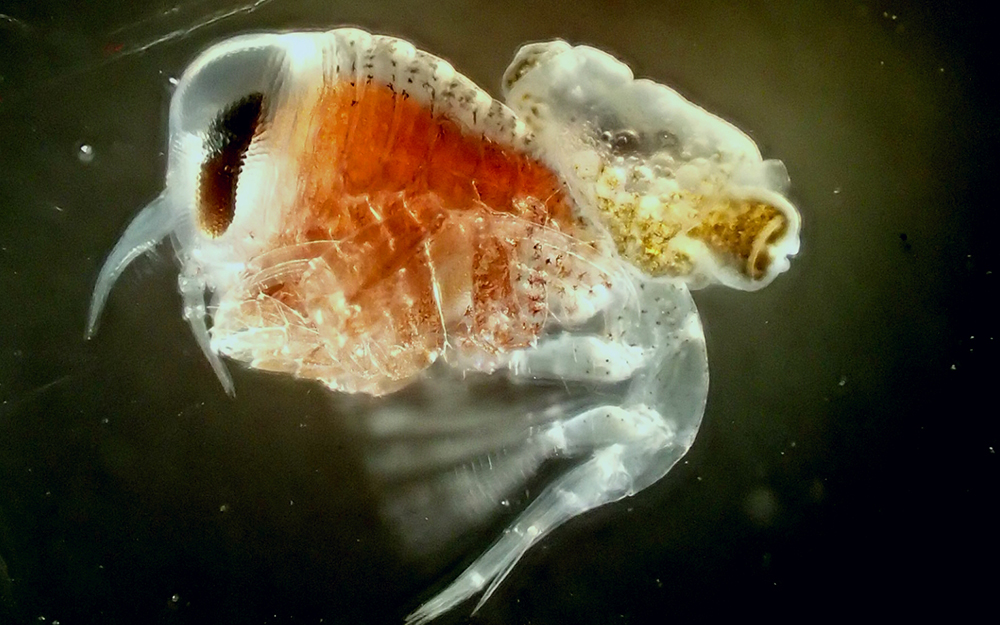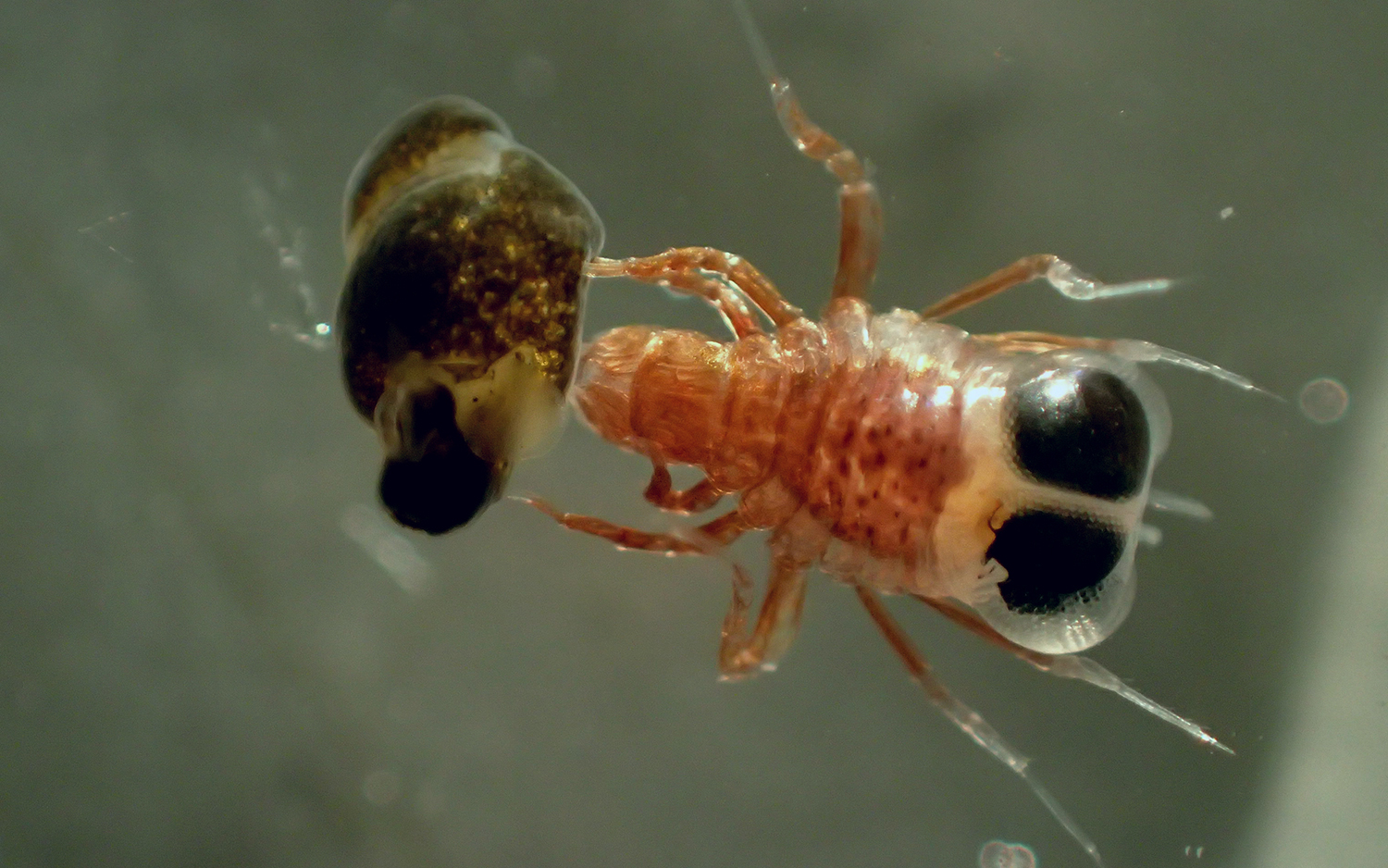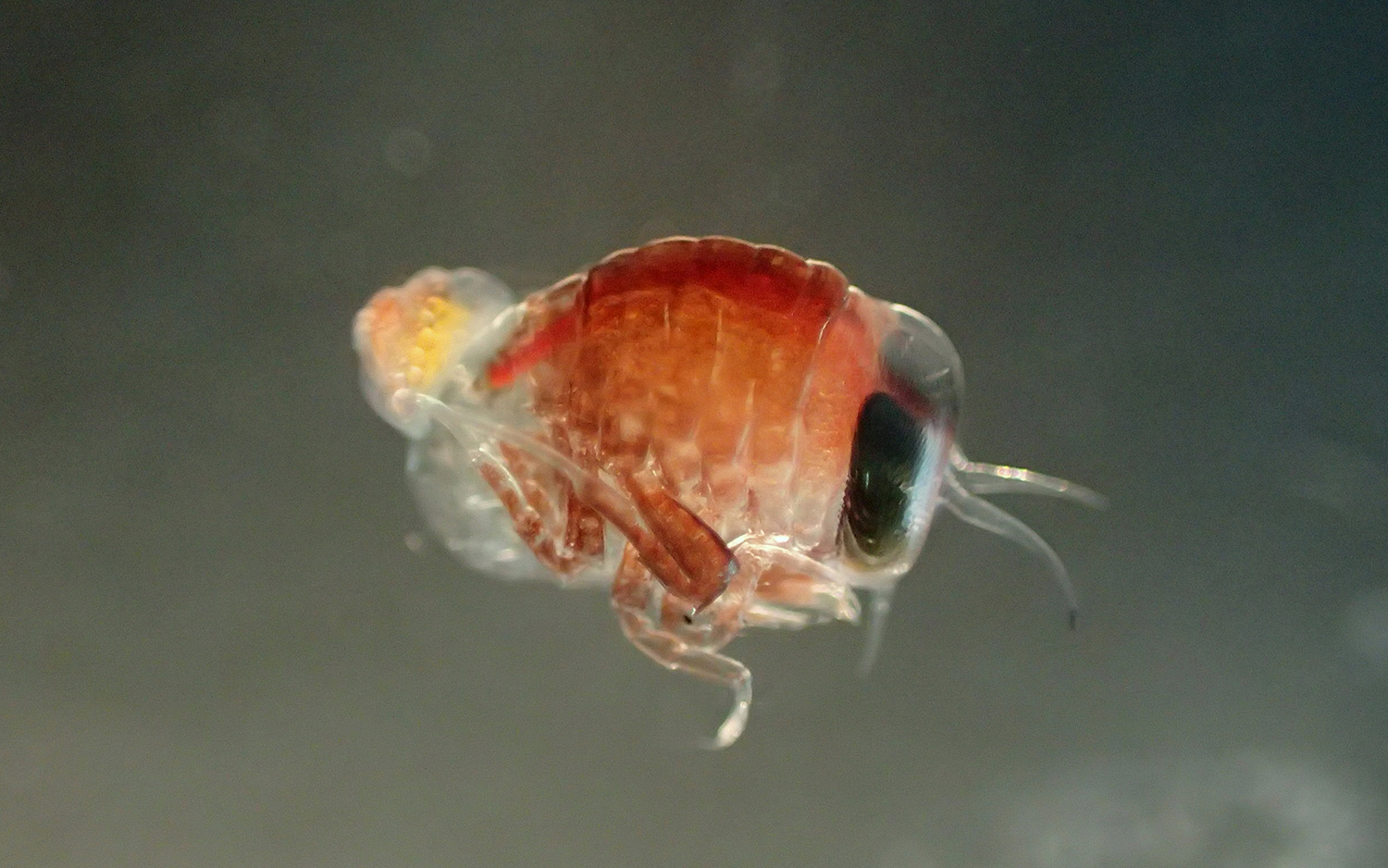Tiny Antarctic 'Kidnappers' Steal Sea Snails & Wear Them Like Backpacks

Pea-size pteropods, also known as sea snails, are translucent and delicate ocean organisms that protect themselves against predators with a potent chemical cocktail. However, another organism that's immune to pteropods' poisonous brew is taking advantage of the little snails' weapon.
In the Southern Ocean, near Antarctica, tiny shrimp-like crustaceans called amphipods seek out the chemically protected snails; the crustaceans "kidnap" the mollusks and wear them like backpacks, holding them in place with two pairs of legs, so the snails can't escape.
Fish and other predators that would normally eat the amphipods are then discouraged by the snails' toxins and learn to avoid amphipods that have snails on their backs, scientists reported in a new study. [Life on Ice: Gallery of Cold-Loving Creatures]
While this arrangement generally works out very well for the amphipods, the sea snails don't seem to benefit from it at all. In fact, the pteropods can't feed themselves once they've been pressed into service by their new masters, and the kidnapped snails usually starve to death, the study authors discovered.
Previous research from nearly three decades ago described backpacking amphipods in coastal waters near Antarctica; at the time, the backpack strategy appeared to work well against icefish, which prey on amphipods and are visual hunters. But scientists didn't know how widespread this behavior was in Southern Ocean ecosystems or if it was mutually beneficial for the animals, the researchers in the new study wrote.
They sampled four sites in ice-free regions of the open ocean from the Antarctic polar front to the eastern Weddell Sea, finding examples of backpacking behavior in two amphipod species: Hyperiella dilatata which only carried the sea snail Clione limacina antarctica, and Hyperiella antarctica, which favored the Spongiobranchaea australis sea snail.
Both male and female amphipods wore the living snail backpacks, which varied in size from one-fifth to one-half the host's body length. And the "abductors" maintained their tenacious grip on the sea snails, holding fast even after the amphipods died, the researchers reported.
Get the world’s most fascinating discoveries delivered straight to your inbox.
Though the researchers collected 342 amphipods, only four individuals clutched pteropod hostages. And with so few specimens, it's impossible to say for sure if the crustaceans deliberately target one species of sea snail for their living backpacks, or if any type of toxic sea snail will do, according to the study.
Interactions between minuscule ocean creatures such as these are exceptionally difficult to capture and study, as collection nets often crush the animals' delicate bodies, lead study author Charlotte Havermans, a biologist with the Directorate Natural Environment at the Royal Belgian Institute of Natural Sciences, said in a statement.
But new developments in high-definition underwater camera technology could soon make it possible to observe "even the smallest life-forms in their habitat," Havermans said.
The findings were published online Sept. 5 in the journal Marine Biodiversity.
Original article on Live Science.

Mindy Weisberger is a science journalist and author of "Rise of the Zombie Bugs: The Surprising Science of Parasitic Mind-Control" (Hopkins Press). She formerly edited for Scholastic and was a channel editor and senior writer for Live Science. She has reported on general science, covering climate change, paleontology, biology and space. Mindy studied film at Columbia University; prior to LS, she produced, wrote and directed media for the American Museum of Natural History in NYC. Her videos about dinosaurs, astrophysics, biodiversity and evolution appear in museums and science centers worldwide, earning awards such as the CINE Golden Eagle and the Communicator Award of Excellence. Her writing has also appeared in Scientific American, The Washington Post, How It Works Magazine and CNN.


